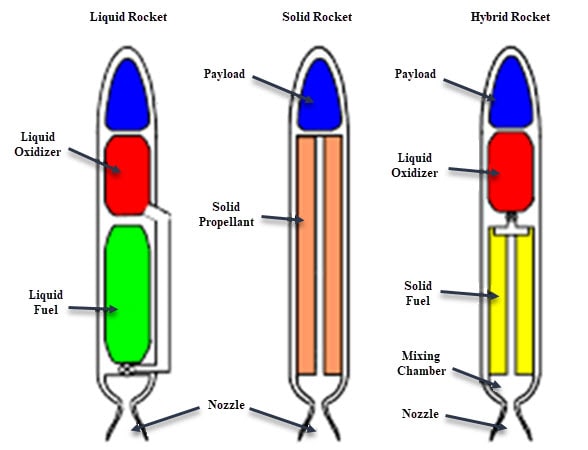# PROPULSION 2:
UNIT I – HYPERSONIC AIRBREATHING PROPULSION (PROPULSION 2)
- Introduction to Hypersonic Air Breathing Propulsion
- Hypersonic Vehicles and Supersonic Combustion
- Need for Supersonic Combustion for Hypersonic Propulsion
- Salient Features of Scramjet Engine and its Applications for Hypersonic Vehicles
- Problems Associated with Supersonic Combustion
- Engine/Airframe Integration Aspects of Hypersonic Vehicles
- Various Types Scramjet Combustors
- Fuel Injection Schemes in Scramjet Combustors
- One Dimensional Models for Supersonic Combustion Using Method of Influence Coefficients
UNIT II – FUNDAMENTALS OF CHEMICAL ROCKET PROPULSION (PROPULSION 2)
- Operating Principle
- Specific Impulse of a Rocket
- Internal Ballistics
- Performance Considerations of Rockets
- Types of Igniters
- Preliminary Concepts in Nozzle-Less Propulsion
- Air Augmented Rockets
- Pulse Rocket Motors
- Static Testing of Rockets & Instrumentation
- Safety Considerations
UNIT III – SOLID ROCKET PROPULSION (PROPULSION 2)
- Salient Features of Solid Propellant Rockets
- Selection Criteria of Solid Propellants
- Estimation of Solid Propellant Adiabatic Flame Temperature
- Propellant Grain Design Considerations
- Erosive Burning in Solid Propellant Rockets
- Combustion Instability in Solid Propellant Rockets
- Strand Burner – Solid Propellant Rockets
- T-Burner – Solid Propellant Rockets
- Applications of Solid Propellant Rockets
- Advantages of Solid Propellant Rockets
- Disadvantages of Solid Propellant Rockets
UNIT IV – LIQUID AND HYBRID ROCKET PROPULSION (PROPULSION 2)
- Salient Features of Liquid Propellant Rockets
- Selection Criteria of Liquid Propellants
- Various Feed Systems Of Liquid Propellant Rockets
- Injectors – Liquid Propellant Rockets
- Thrust Control
- Cooling in Liquid Propellant Rockets
- The Associated Heat Transfer Problems
- Combustion Instability in Liquid Propellant Rockets
- Peculiar Problems Associated with Operation of Cryogenic Engines
- Introduction to Hybrid Rocket Propulsion
- Standard and Reverse Hybrid Systems
- Combustion Mechanism in Hybrid Propellant Rockets
- Applications and Limitations
UNIT V – ADVANCED PROPULSION TECHNIQUES (PROPULSION 2)
- Electric Rocket Propulsion
- Types of Electric Propulsion Techniques
- Ion Propulsion
- Nuclear Rocket
- Comparison of Performance of these Propulsion Systems with Chemical Rocket Propulsion Systems
- Future Applications of Electric Propulsion Systems
- Solar Sail
Do you want to refer wikipedia? Please click here…

